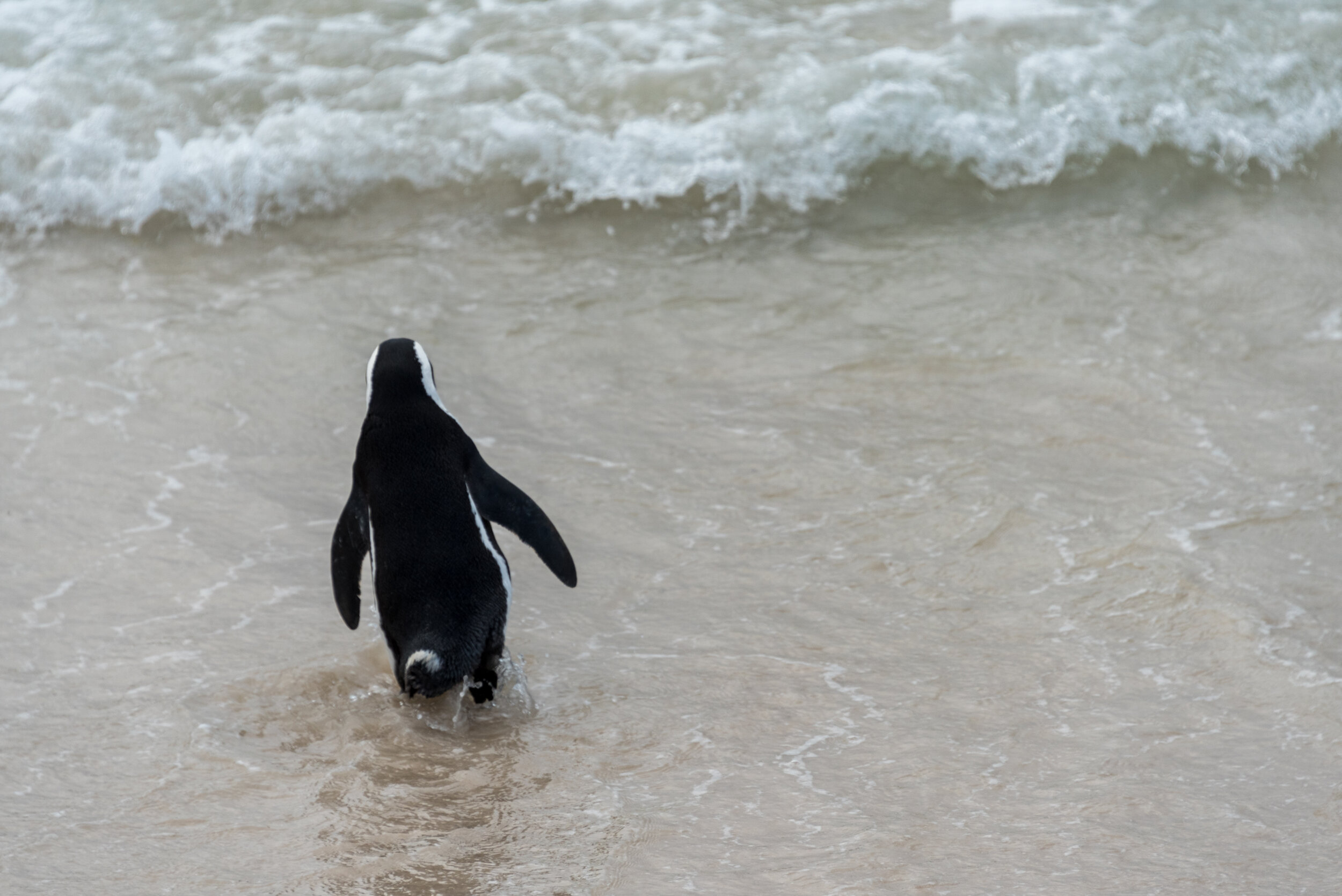“You Screeeaaam, I Brrrriiinnnnggg…ICE CREEEEAAAM!”
Lounging on a pristine stretch of blindingly white sand, protected from the wind by giant boulders left and right and the granite peaks of a new world wonder behind, a granadilla lollie (passionfruit popsicle) from one of the handful of rhyming and roaming beach vendors seemed like the natural choice. Having been in Cape Town for a week-plus by now, you’d think I would have grown accustomed to the movie-set scenery and delicious food, but I found myself unable to prevent my gaze from darting all around me as I gnawed on some frozen deliciousness. Do I re-count the “12 Apostles” stretching from Table Mountain down the coast, or try to spot hikers climbing Lion’s Head, or pick out which beach house to buy someday, or enjoy the crashing waves in front of me while digging my feet as far as possible into the soft sands? I’m not sure which view I decided I liked the most, but the decision process required more than one visit from the Ice Cream Man.
Cape Town is, undoubtedly, one of the most beautiful cities I’ve ever had the chance to visit. The setting is second to none, with multiple beaches, each having their own feel and backdrop, panoramas of Table Mountain from almost every neighborhood, and a saddle between that seems to split the city skyscrapers from the idyllic beach town. Everything you could ask for is within 10 minutes: beach, mountains, forests, gardens, fine dining, fish & chips shacks, city lights, and serene neighborhoods. It’s quite amazing how so much, and so many views, can be packed into such a manageable city center and surrounds.
Having been on the move for the better part of 3 months, we chose to kick our feet up a bit in Cape Town, opting for a couple different week-long stints in AirBnBs around town. We spent our days moseying to a Jazz brunch in an Old Victorian house turned restaurant, sipping cappuccinos in a Steampunk-inspired coffee shop that looked like a line at a Disneyland attraction, sampling gourmet chocolates while discovering a secret, nondescript gin bar nestled into the back courtyard, enjoying sundowners over the beach from a swanky rooftop bar, biking through city parks and the coastal promenade, and discerning which snacks to buy from waterfront market halls. While there are seemingly endless options for food and activities in the city, we spent a good amount of time simply relaxing inside. After months on the go, some recuperation was required, along with some home-cooked meals. My fried egg game had become a little rusty, but cooking our own meals, brewing our own coffee, and waking up with no pressure to go, go, go was just the shot in the arm needed after making it through the ups and downs of travel through Africa.
Each one of Cape Town’s neighborhoods provide their own appeal, from the brightly colored Bo-Kaap, to the edgy, but up-and-coming Woodstock, to the upscale Camps Bay, there’s something for every taste and preference. Cape Town manages to feel like somewhat of a small town through it all, where walking is manageable most anywhere you want to go. It’d be irresponsible however, to define Cape Town only by its trendy trappings, as behind the craft gin bars, colorful streets, and boutiques is a history of repression still very much visible today. The days of apartheid, amongst other extreme acts of segregation, saw entire, mostly Black, communities uprooted and moved into “Townships” outside of the city center. These townships remain today, throughout the city and country, and provide a stark contrast from the modern city centers and suburbs. Corrugated metal shacks, brightly painted in all different primary colors, sprawl for miles outside of the central business district. Residents are mostly black. Housing is extremely basic. Crime is rife. Adolescents are left with limited options, paving the way for gangs to flourish. You might understandably mistake yourself for being in Europe or any other developed nation wandering around the nicer neighborhoods, but, in reality, there’s simply a large bubble enveloping the stunning setting that’s made Cape Town globally famous.
I found it a bit difficult to pinpoint South African culture as compared to many of the other African nations we’ve travelled through to date. Is there a coffee culture? Is it a foodie paradise? A surf town? Outdoorsy? High Class? The answer, technically, would be Yes to all of the above, making for a great holiday and plenty of nice pictures, but, to me, there was something inauthentic about it all. It all felt a bit manufactured, like a “trendy, western city” blueprint was laid out and followed to a T. When, for the most part, the people participating in all of the activities that have made Cape Town famous are White, yet White people only make up 15% of the population in the city, you start to wonder what everyone else is doing, and where the doing is happening. Of course, with a bit more digging and steps off the beaten path, I’m sure it would have been possible to see more sides of Cape Town and its culture, but the city that 99% of tourists and Instagram feeds will see, outside of some museums, will be the one in which a small, specific percent of the population participates. Racial divides accompany divisions in income levels as well, making robberies an unfortunate reality of the city. While taking the normal precautions during sightseeing usually suffices, I was disappointed to learn how rampant muggings were within Table Mountain National Park, Cape Town’s icon. Nature typically provides a respite from the dangers of cities, but unfortunately, Cape Town has not been able to control thieves from entering the park and robbing guests of their valuables. With gun ownership the norm, a pleasant hike can become quite unnerving.
With all its scars, and perhaps some open wounds, Cape Town still shines as a stunner of a city. Saving our hikes for the end of our stay (in case we were robbed), we made our way up Table Mountain via a less travelled route, thanks to some insider information from siblings and friends. Hugging the coast with the 12 Apostles ahead, we made our way up the mountain to a precarious ledge for a few cliffhanger photos, before working our way to the top, where the cable car drops off all the cheaters. The views in all directions are expansive, with city meeting sea and peaks dropping straight down to the water on one side and into rolling hills on the other. Beautiful flora is everywhere, rock formations abound, and the countless peaks make sure you never run out of potential hikes. After loitering around at the top to take in the view as long as possible, we made our way down the other side of the mountain, dropping through Skeleton Gorge and out into Kirstenbosch gardens, probably the most beautiful botanical gardens I’ve seen, with summer concerts, movie nights, and picnic opportunities galore. While it took us all day, I’d be hard pressed to find a better day hike. The following day, we made our way up Lion’s Head, the 2nd most famous hike in town, with 360-degree views and a more intimate look at the city and its neighborhoods, as well as a front row seat to Table Mountain in all her glory. From the top of Lion’s Head, you can plan out your entire stay in Cape Town, pointing to your favorite of the Clifton beaches, the waterfront markets you want to try, the trail you want to take up Table Mountain, and of course, your future dream home in the hills of Camps Bay.
Our final Sundowner in Cape Town, in Africa for that matter, was atop Signal Hill, as we joined the throngs of Capetonians and tourists on the biggest picnic blanket known to man and bid farewell to the bright orange, unrelenting, African sun, and to a city that can’t help but glow in its rays…






















































